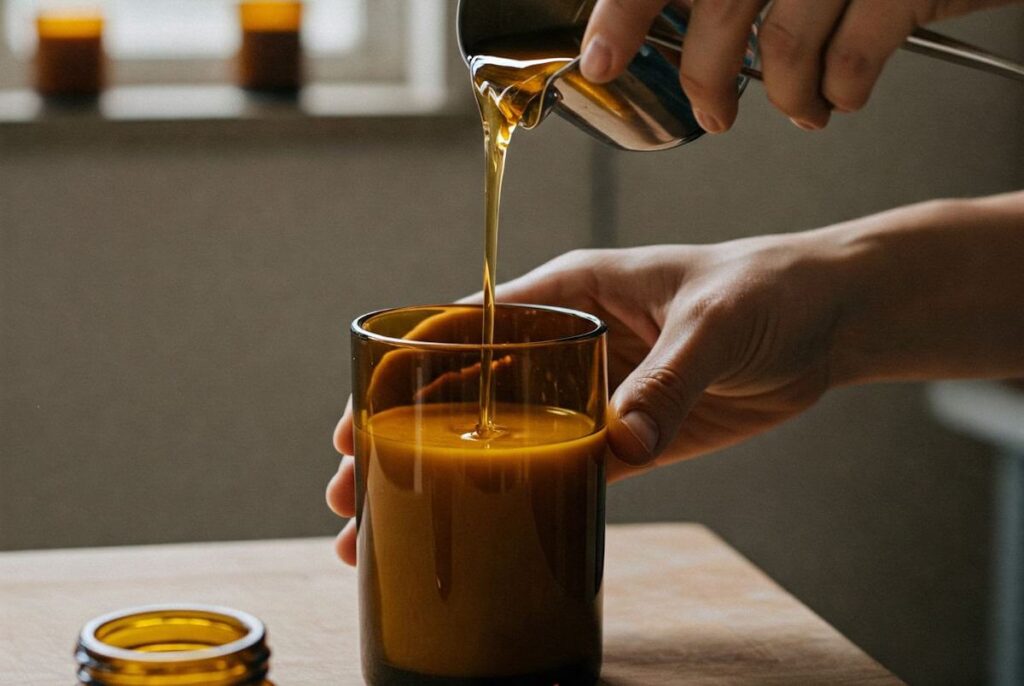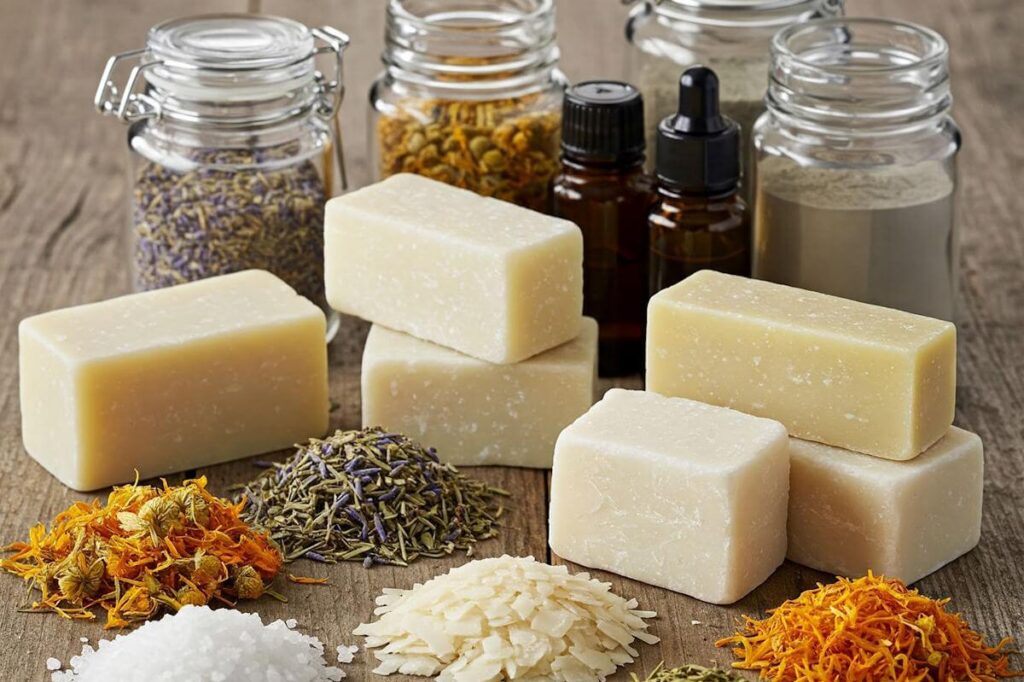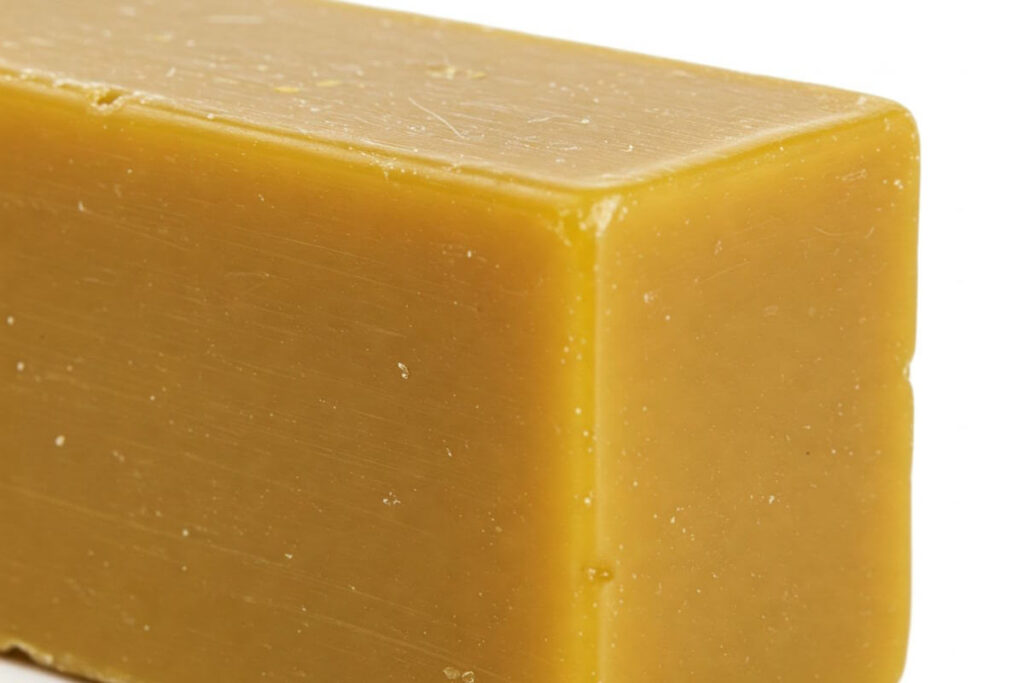The art of luxury candle making has experienced a significant resurgence in recent years, evolving from a humble hobby into a flourishing industry. This craft not only satisfies a need for ambiance but also appeals to the growing demand for high-quality, artisanal products that reflect personal style and preference. Luxury candles are distinguished from standard candles by their exceptional materials, unique scents, and the meticulous craftsmanship involved in their production.
Historically, candles have served practical purposes, providing light before the advent of electricity. However, their transition into decorative items and symbols of luxury and self-care began in the 20th century. Today, luxury candles are sought after for their aesthetic appeal and ability to enhance the atmosphere of a space, often utilizing premium waxes and wicks to improve burn quality and scent throw. The selection of materials plays a crucial role in defining a luxury candle; for instance, soy or beeswax are favored over paraffin for their eco-friendliness and clean-burning properties.
In addition to materials, the artistry found in crafting luxury candles sets them apart. The process often includes hand-pouring and a keen attention to detail in the fragrance blend, resulting in sophisticated and multi-layered scents that can evoke specific moods or memories. Moreover, luxury candles often feature elegant packaging, elevating them into sought-after gifts or decorative pieces in homes. As interest in luxury lifestyle products continues to rise, many craft enthusiasts are now transitioning from creating candles as a pastime to establishing successful businesses in this niche market.
This journey into luxury candle making not only allows individuals to express creativity but also opens avenues for entrepreneurial growth, catering to discerning customers who appreciate the finer nuances of craftsmanship and quality. The next steps will involve exploring the essential tools and techniques necessary for launching this rewarding endeavor.
Essential Supplies for Crafting Luxury Candles
Creating luxury candles requires a keen understanding of the essential supplies that contribute to the overall quality and aesthetic of the final product. First and foremost, the choice of wax is crucial. There are several types of wax available, including paraffin, soy, beeswax, and palm wax. Each wax type offers unique properties; for instance, soy wax is favored for its eco-friendliness and excellent scent throw, while beeswax is known for its natural, golden hue and air-purifying qualities. Selecting high-quality wax will ultimately enhance the performance and appeal of your luxury candles.
Next, the selection of wicks is vital for ensuring that the candle burns evenly and efficiently. Wicks come in various materials such as cotton, wooden, or zinc-core wicks. The size and type of wick should be matched to the type of wax and the dimensions of the container or mold used. This attention to detail aids in controlling the burn rate and optimizing the fragrance release, essential for a luxury scent experience.
Fragrance oils play a significant role in the allure of luxury candles. It is essential to choose high-quality, concentrated fragrance oils that are specifically designed for candle making. These oils not only enhance the scent profile of your candles but also ensure a long-lasting aroma. Additionally, using dyes for coloring can elevate the visual appeal of your creations. Choosing the right colorants, whether liquid or powdered, is necessary to achieve vibrant, consistent results without affecting the candle’s performance.
Finally, mold selection is important for shaping your candles. Options range from metal, glass, to silicone molds, each producing different finishes and effects. Lastly, safety equipment, such as gloves and goggles, is paramount during the candle-making process to protect against accidental spills or burns. By investing in high-quality materials and supplies, you lay the foundation for crafting exquisite luxury candles that resonate with your audience.
Understanding Candle Making Techniques
Candle making is a multifaceted craft that encompasses various techniques, each with its own distinct benefits and artistic possibilities. Among the most commonly used methods are pouring, molding, and layering, each of which contributes uniquely to the final product’s quality and aesthetic appeal.
The pouring technique is quintessential for beginners and offers a straightforward approach to candle making. In this process, melted wax is poured into a container or mold, where it solidifies into the desired shape. Attention to temperature is paramount during pouring; wax that is too hot can create unsightly surface imperfections, while wax that is too cool may not adhere properly to the wick. For optimal results, the candle maker should wait until the wax reaches a temperature between 140°F and 160°F before pouring.
Molding, on the other hand, creates candles with intricate shapes and designs. This technique utilizes a rigid mold into which the melted wax is introduced. Properly preparing the mold—by ensuring it is clean and applying a release agent—can significantly enhance the ease of removing the finished product. Additionally, adding colorants or fragrances can be incorporated into the wax before pouring, resulting in a beautifully unique candle that reflects the maker’s creativity.
Layering introduces an element of artistry, allowing creators to design candles with visual depth and complexity. This technique involves pouring layers of different colored or scented wax at controlled temperatures to create a stratified effect. Mastering layering requires a keen understanding of timing; each layer must be allowed to partially cool before the next is added. This careful layering can elevate the candle’s aesthetic and scent profile, making it particularly appealing to luxury market consumers.
Ultimately, understanding these candle making techniques—pouring, molding, and layering—is essential for anyone looking to transition from a hobbyist to a serious candle maker. By mastering these processes, along with incorporating tips on temperature control and mixing techniques, aspiring candlemakers can create high-quality products that stand out in a competitive market.
Creating Unique Fragrance Blends
The creation of unique fragrance blends is a pivotal aspect of crafting luxury candles. Understanding the fundamentals of fragrance notes is essential for any candle maker aspiring to elevate their products. Fragrance notes typically fall into three categories: top, middle, and base notes. Top notes are the initial aromas that captivate the senses upon lighting the candle; they tend to be light and fresh. Examples include citrus and herbal scents. Middle notes, often referred to as heart notes, emerge once the top notes dissipate and provide depth to the fragrance. Common middle notes include floral and spicy aromas, which establish the candle’s character. Finally, base notes are the rich, anchoring scents that linger after the candle is extinguished; these often include warm or woody elements such as vanilla or sandalwood.
Layering these scent notes is where the artistry comes into play. A sophisticated fragrance profile is often achieved by carefully balancing various notes to ensure they complement rather than overpower each other. For instance, a candle featuring a citrus top note can be beautifully balanced with a floral middle note and a warm vanilla base. This balance ensures that each stage of the scent experience is enjoyable, creating a harmonious and inviting atmosphere.
In addition to understanding notes, selecting complementary ingredients can significantly enhance the overall candle experience. When choosing fragrances, it is crucial to consider how each scent interacts with others in the blend. Scents that share common molecular structures often work well together. For example, pairing woody scents with earthy notes can provide a richer olfactory experience. Experimentation is key in this process; by testing and adjusting ratios, candle makers can uncover unique combinations that resonate with consumers. Through the intentional crafting of fragrance blends, candle makers can not only define their brand’s identity but also create memorable sensory experiences for their customers.
Designing Beautiful Candle Presentation
In the luxury candle market, presentation plays a pivotal role in attracting discerning customers. The first aspect to consider is the selection of containers. Glass jars, metal tins, and ceramic vessels are among the popular choices, each providing unique aesthetic qualities. Selecting high-quality materials that reflect durability and elegance can significantly enhance the perceived value of the candle. For instance, using thick, clear glass can convey transparency and refinement, while matte or frosted finishes can add a touch of sophistication.
Labeling is equally crucial, as it serves not only as a source of information but also as a branding tool. High-end candles often feature minimalist logo designs, premium font selections, and rich color palettes that align with the brand’s identity. The labeling design should complement the container while effectively showcasing the candle’s unique selling points, such as scent descriptions or natural ingredients, which resonate with luxury consumers. Furthermore, incorporating sustainable practices in labeling, such as recycled paper or eco-friendly inks, can attract environmentally-conscious buyers who appreciate conscientious craftsmanship.
Packaging design also merits attention when crafting a luxury candle. Innovative packaging can serve as a functional element, safeguarding the product during transit while enhancing the unboxing experience. Utilizing textured materials or custom boxes can elevate the overall experience and communicate a sense of exclusivity. Including additional elements such as a thank-you note, care instructions, or scent cards can provide useful information while building an emotional connection with the consumer. This combination of practical design and aesthetic appeal can effectively set a luxury candle apart from competitors in a crowded market.
Lastly, thoughtful branding that resonates with target audiences will help establish market differentiation. The overall presentation, from container to packaging, should create a cohesive narrative that aligns with the brand’s vision and values. By paying close attention to these elements, candle makers can successfully enhance the allure and appeal of their luxury offerings.
Testing and Refining Your Candle Creations
When transitioning from hobbyist to business owner in the world of luxury candles, the significance of rigorous testing cannot be overstated. Ensuring that your candles meet high standards of quality and performance is essential before launching any product line. This process begins with evaluating key attributes such as burn time, scent throw, and safety, each of which contributes to the overall consumer experience.
Burn time is a critical factor to examine, as it determines how long a candle can effectively provide ambiance and fragrance. Conduct a series of burn tests using a variety of wick types and wax formulations to ascertain optimal performance. Document burn durations thoroughly, as consistent results will enhance your brand’s reputation for reliability.
Scent throw is another vital aspect. This refers to how well the fragrance disperses into the surrounding environment when the candle is lit. Assess both cold throw (the scent emitted when the candle is unlit) and hot throw (the scent produced while burning). Experiment with different fragrance oils and concentrations to find the perfect balance, ensuring that your luxury candles provide a captivating experience without being overpowering.
Equally important is the safety of your products. All materials, including wax, wicks, and fragrance oils, should be scrutinized for compliance with relevant safety standards. In addition, you must consider potential hazards, such as the creation of soot and smoke. Conducting safety tests is imperative to mitigate risks and promote consumer confidence in your brand.
Finally, gathering feedback is a valuable step in refining your formulations. Engaging with a focus group to sample your candles can yield insightful data. Implement this feedback to make necessary adjustments, thus continuously improving your candle offerings. By meticulously testing and refining your creations, you can develop a product line that resonates with your customers and stands out in the competitive luxury market.
Creating a Business Plan for Your Candle Venture
When embarking on the journey of establishing a luxury candle business, a well-structured business plan is paramount. This document not only serves as a roadmap for your venture but also plays a critical role in attracting potential investors. The first step in crafting your business plan involves thorough market research. Understanding the current landscape of the luxury candle industry is essential. This includes analyzing trends, evaluating competitors, and identifying gaps in the market. Collecting data on consumer preferences and buying habits will provide insights that can inform your product development and marketing strategies.
Next, it is essential to clearly define your target audience. Identifying the demographics and psychographics of potential customers will help tailor your offerings and marketing messages. Consider factors such as age, income level, lifestyle choices, and values. For instance, a luxury candle aimed at environmentally conscious consumers may highlight sustainable sourcing and eco-friendly packaging in its branding. Additionally, determining your pricing strategy is crucial. Establish a price point that reflects the quality of your product while ensuring profitability. Analyze competitors’ pricing and consider the production costs associated with sourcing high-quality materials.
Planning for production and distribution is another vital component of your business plan. Outline your production process, including sourcing materials, candle-making techniques, and quality control measures. Consider whether to manufacture in-house or partner with a manufacturer. Furthermore, establish a distribution strategy that may involve online sales, local markets, or retail partnerships. This section should also include logistics for inventory management and shipping procedures.
Setting measurable goals and defining key performance indicators (KPIs) throughout the business plan enables you to track your progress. Regularly assess these metrics to evaluate the effectiveness of your strategies and make necessary adjustments to optimize your luxury candle business for success.
Marketing Strategies for Luxury Candles
Marketing luxury candles requires a distinct approach that emphasizes both the product’s quality and the emotional experience it offers. Effective marketing strategies in this segment often leverage social media platforms, as they provide a visual space to showcase high-end designs and aesthetics. Imagery plays a vital role in attracting customers, making platforms like Instagram and Pinterest ideal for posting visually striking images of the candles in various settings. The use of hashtags relevant to luxury living and home décor can also widen the reach of promotional efforts, connecting with potential buyers who value luxury items.
Collaborating with influencers who have a strong following in the lifestyle, home decor, or wellness niches can enhance visibility for luxury candle brands. These influencers can provide authentic testimonials or feature the candles in their content, offering an additional layer of credibility that appeals to discerning consumers. Selecting the right influencers, particularly those whose audience aligns with the brand’s target market, is crucial in establishing a successful partnership.
In addition to online marketing, attending craft fairs or local markets can create personal connections with customers. This direct engagement allows potential buyers to experience the quality and scent of the candles firsthand, which is invaluable in the luxury segment. Offering exclusive products or limited editions during these events can further entice customers and create a sense of urgency to purchase.
Online marketplaces, especially those that cater to luxury goods, should also be utilized to expand reach. These platforms allow niche candle brands to tap into established audiences who are specifically looking for high-quality products. On these marketplaces, storytelling plays an essential role. Sharing the narrative behind each candle—whether it be the inspiration, ingredients, or artisanal creation process—can resonate with consumers and enhance the perception of luxury. Overall, a multi-faceted marketing approach that combines social media, influencer partnerships, personal engagement, and compelling storytelling will effectively position luxury candles in the marketplace.
Scaling Your Luxury Candle Business
Once a luxury candle business has found its niche and established a loyal customer base, the next logical step is to scale operations effectively. Expansion not only increases revenue potential but also enhances brand visibility in a competitive marketplace. One of the most effective strategies for scaling is to broaden the product line. This could involve introducing new scents, incorporating seasonal themes, or even branching into complementary products such as candle accessories. By diversifying offerings, brands can attract a wider audience and meet varying customer preferences.
Additionally, leveraging e-commerce channels is crucial for scaling a candle business in today’s digital landscape. Establishing a user-friendly online storefront can facilitate reach to a global market. Utilizing platforms such as social media for targeted advertising, alongside SEO strategies to drive organic traffic, can further enhance online visibility. Engaging with customers through blogs, videos, and premium content can also help build a community around the brand, fostering brand loyalty and encouraging repeat purchases.
Another key element in the growth process is to actively utilize customer feedback. Regularly soliciting and incorporating consumer input can lead to innovations in product design and marketing strategies, ensuring that offerings remain relevant and appealing. Implementing a feedback loop will not only improve customer satisfaction but also signal to consumers that their opinions are valued, thereby increasing their investment in the brand.
As your luxury candle business scales, maintaining product quality is paramount. Implementing standardized production processes and quality assurance measures is essential to ensure consistency across larger batches. Systematic inventory management becomes crucial in managing growth without compromising quality, thus protecting the brand’s reputation. Ultimately, careful scaling requires not just ambition but also strategic thinking and a customer-centric approach to sustain long-term success in the luxury candle market.




